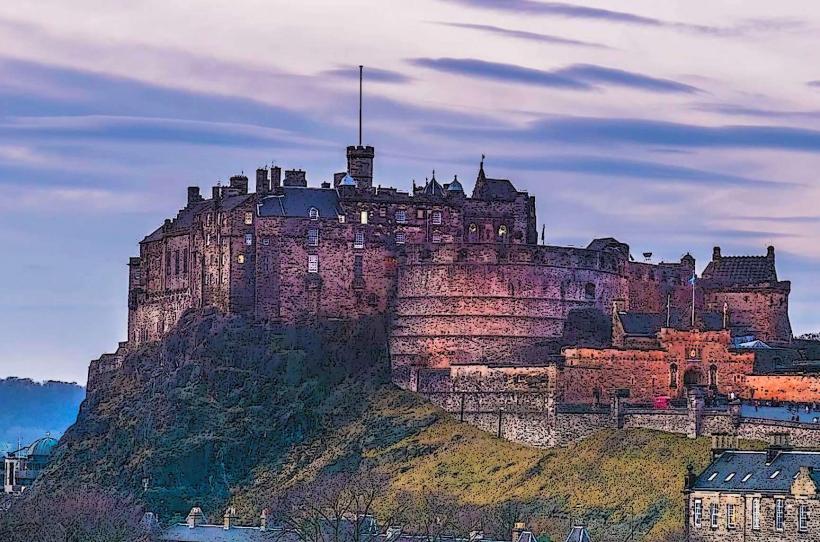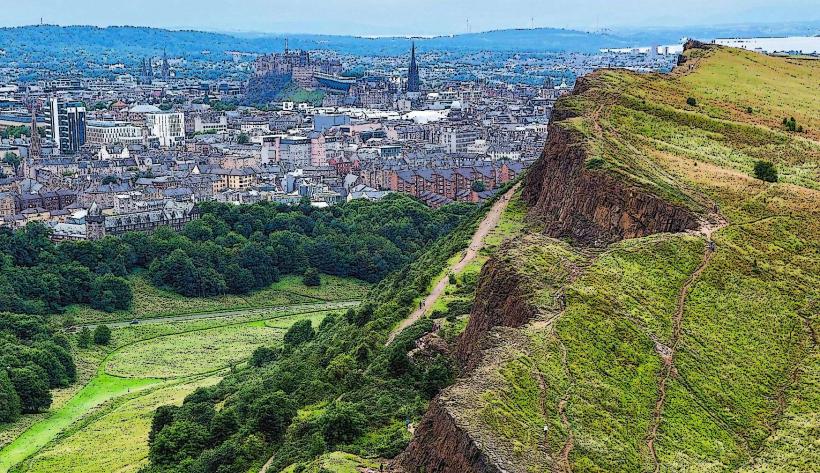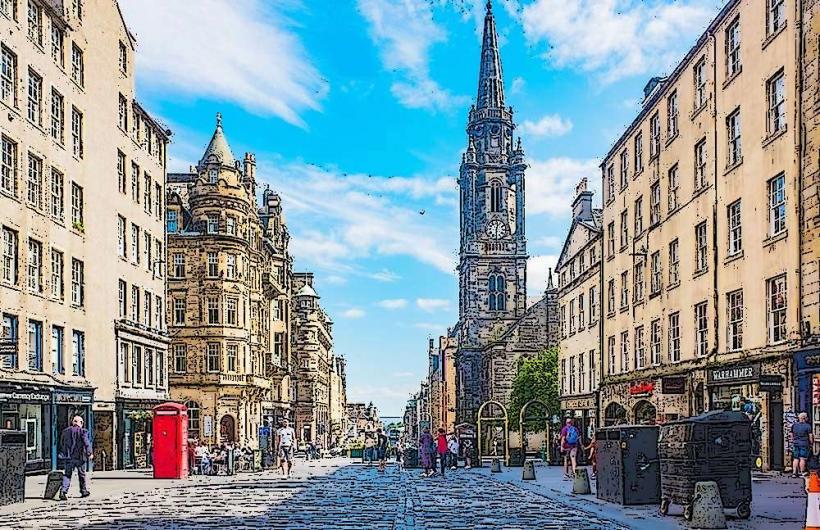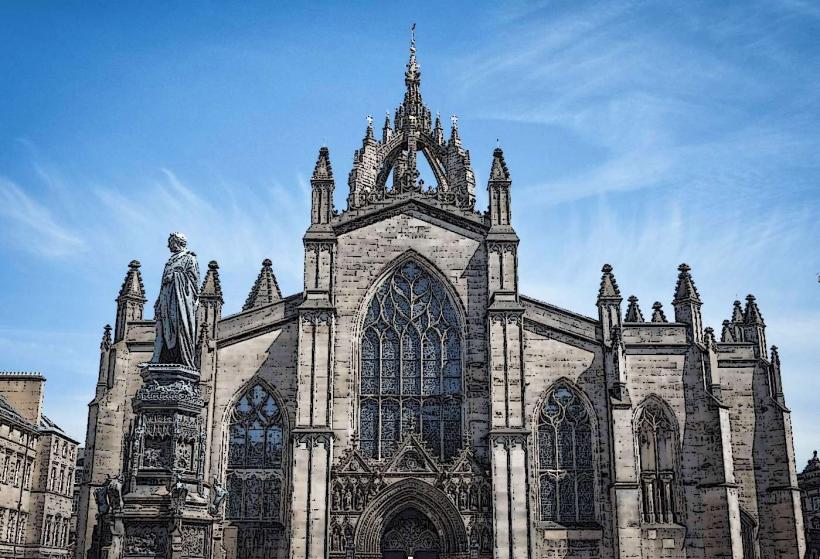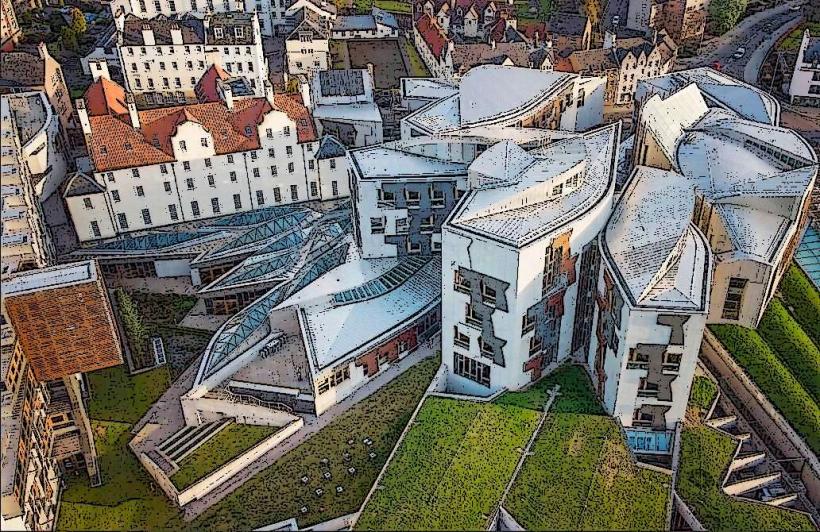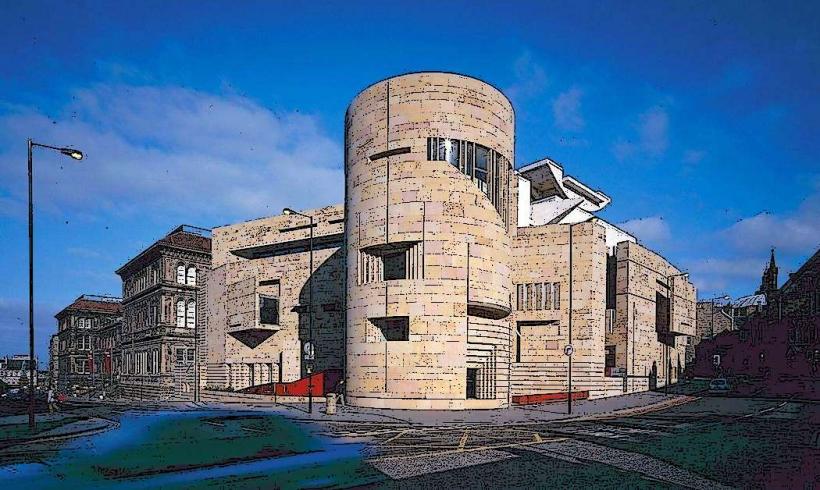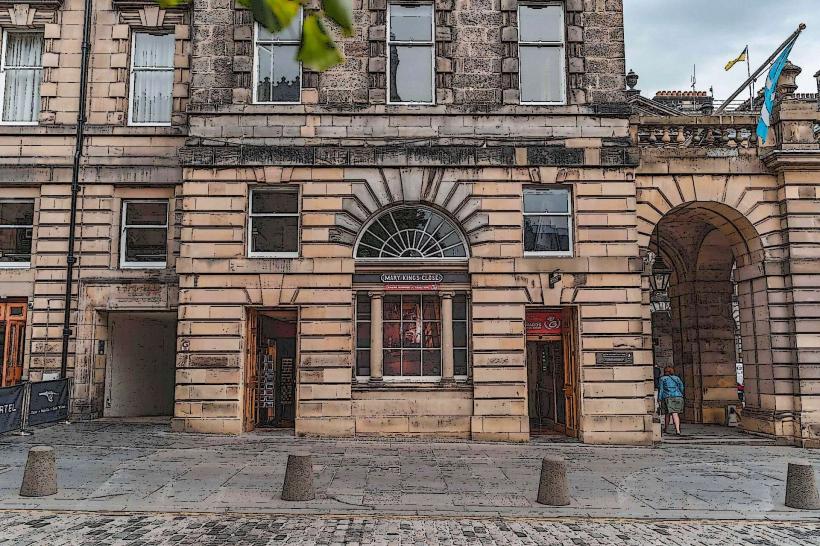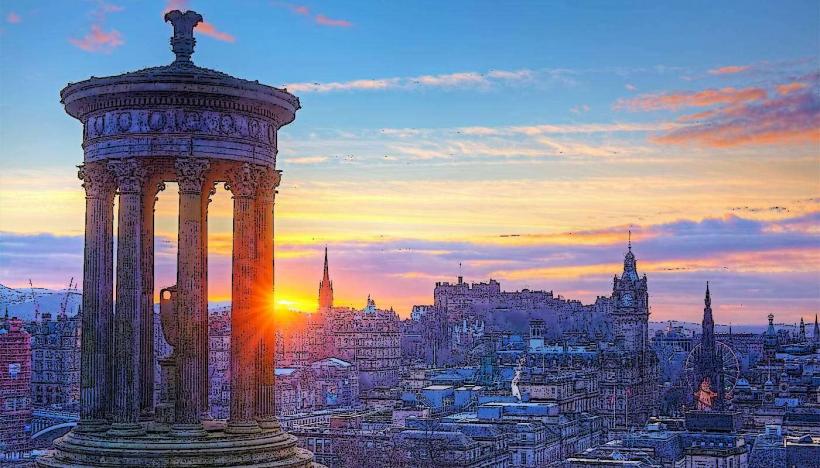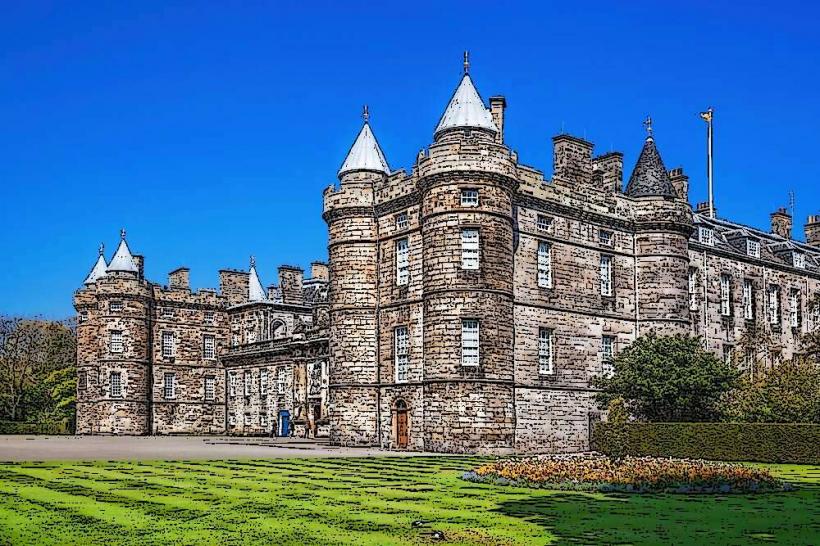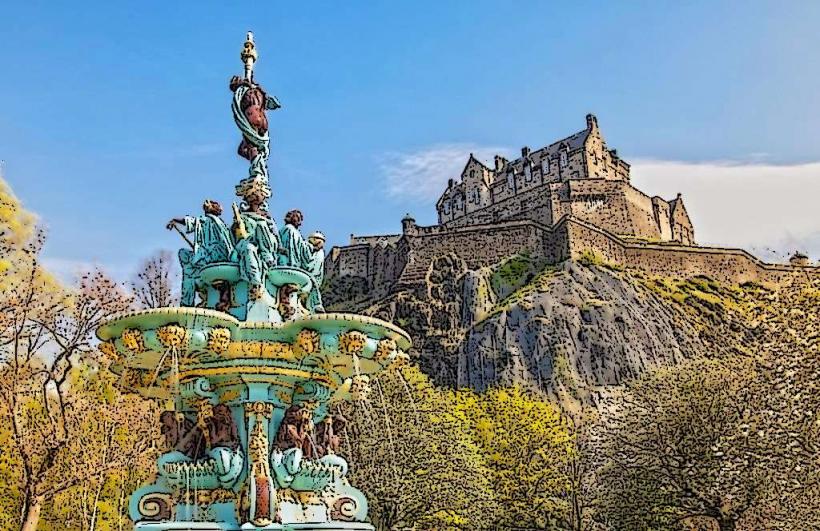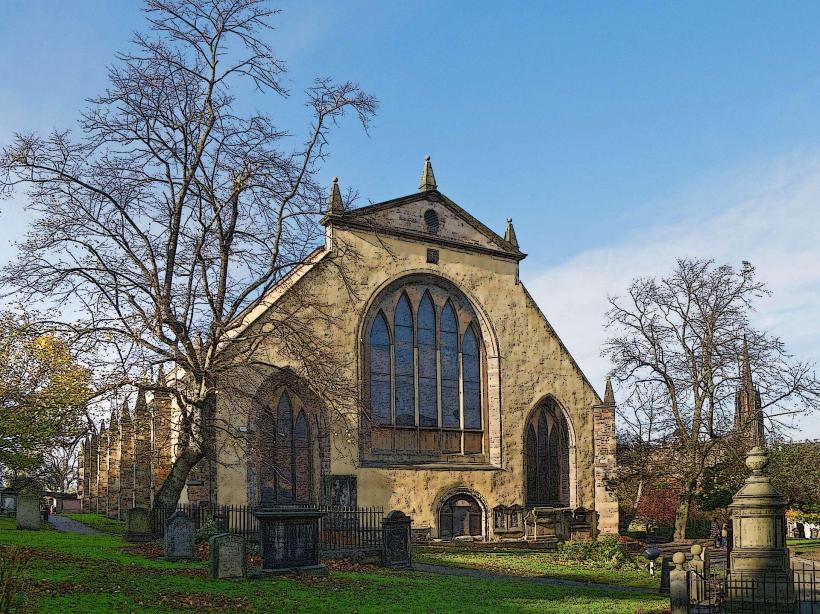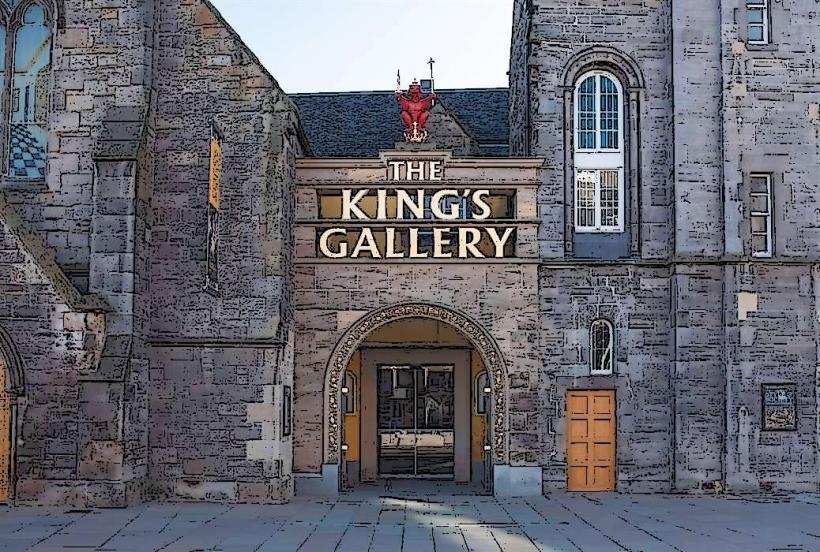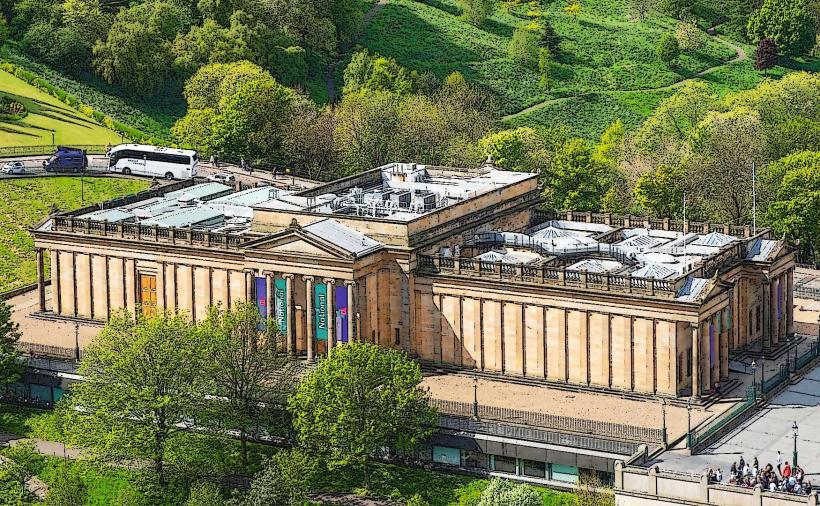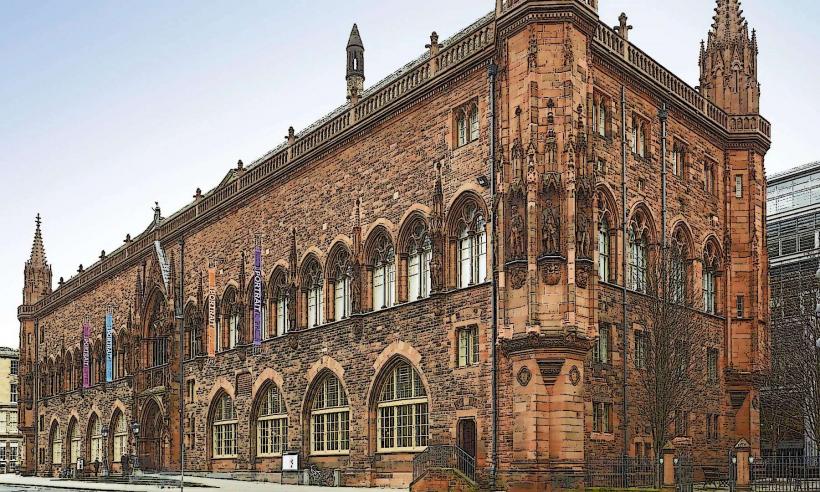Information
Landmark: Holyrood PalaceCity: Edinburgh
Country: United Kingdom
Continent: Europe
Holyrood Palace (officially known as the Palace of Holyroodhouse) is one of the most significant and historic buildings in Edinburgh, Scotland. It serves as the official residence of the British monarch when they are in Scotland. The palace is located at the end of the Royal Mile, in the Canongate district, directly across from Holyrood Park and beneath the dramatic backdrop of Arthur’s Seat.
History and Origins
Early History:
- The site of Holyrood Palace has been associated with Scottish royalty for centuries. Originally, the location was home to a Augustinian abbey, known as Holyrood Abbey, which was founded in 1128 by King David I of Scotland. The abbey’s name, "Holyrood," means "Holy Cross" in Old English, reflecting the abbey's dedication to the Holy Cross relics.
- After the abbey was dissolved in 1560, the monastery’s ruins were used as the foundation for the construction of a royal residence. The early palace structures were built by James IV and expanded by his successors, including James V and Mary, Queen of Scots.
Mary, Queen of Scots:
- Mary, Queen of Scots, famously lived in Holyrood Palace during her reign. She arrived in Scotland in 1561, and the palace became the royal residence during her turbulent reign. It was here that she was involved in the infamous murder of her secretary David Rizzio in 1566, a violent event that took place within the palace.
- Mary’s association with Holyrood Palace is deeply ingrained in Scottish history, and her presence in the palace is often seen as a symbol of the complex and tragic history of Scottish monarchy.
Royal Residence:
- The palace became a royal residence for monarchs following Mary, Queen of Scots, and has continued to serve as such ever since. Over the centuries, the building underwent various renovations, particularly during the reign of Charles I, who expanded the palace in the 17th century.
- In the 18th century, Holyrood Palace fell into a period of disrepair but was eventually restored during the reign of Queen Victoria, who made it an official royal residence when in Scotland.
The Modern Palace:
- Today, Holyrood Palace is an official royal residence for the reigning monarch when they are in Scotland. It remains in use by the royal family during their visits to Edinburgh, and its primary role is as a royal residence and ceremonial space.
Architecture
Holyrood Palace is a striking example of Scottish Renaissance architecture, combining medieval design with later Baroque and classical influences. The building itself is arranged around a large central courtyard, with several key features:
The Front Facade:
- The main entrance to the palace features a grand and impressive façade. The architecture is dominated by the twin towers and a large central section, which is flanked by two wings. The central portion contains the royal apartments and the state rooms, while the wings provide space for additional rooms and courtyards.
The Courtyard:
- At the heart of the palace is a spacious courtyard, with a fountain in the center. The courtyard is a serene space surrounded by the palace’s wings and provides views of the surrounding gardens and the ruins of Holyrood Abbey.
The State Apartments:
- The palace features several grand state rooms, including the Throne Room, which is used for official ceremonies, and the Morning Drawing Room, which hosts many of the royal family’s important receptions. These rooms are lavishly decorated with ornate furnishings, tapestries, and artworks that reflect the long history of the monarchy.
The Queen’s Gallery:
- The Queen’s Gallery at Holyrood Palace is a public gallery that hosts changing exhibitions of art from the Royal Collection. The gallery occupies part of the palace’s old stables and is part of the ongoing efforts to preserve and showcase the royal collection of artwork and historical artifacts.
The Abbey Church:
- A striking feature of the palace grounds is the Holyrood Abbey, which has been in a state of ruin for centuries. The abbey is still visible from the palace, with its impressive arches and walls. The ruins are evocative of the site’s medieval origins and provide a sense of the palace’s historical depth.
Significance of Holyrood Palace
The Official Residence of the Monarch in Scotland:
- Holyrood Palace plays an important role as the official residence of the British monarch when they visit Scotland. The monarch typically stays here for part of their annual visit to Edinburgh, which includes official functions such as the Holyrood Week (also known as Royal Week in Scotland), during which the royal family meets with members of the public, attends ceremonies, and participates in events throughout Scotland.
Royal Ceremonies:
- The palace is often the venue for important ceremonies, including investitures, where individuals receive honors such as knighthoods. The Throne Room is a prominent venue for such ceremonies, and its grand design reflects its ceremonial purpose.
Royal Connections to Edinburgh and Scotland:
- Holyrood Palace has strong historical ties to Scotland's royal family and the Scottish monarchy. The building’s long history is intertwined with that of Scotland itself, making it a significant cultural and historical symbol of the nation.
- The connection between the palace and Mary, Queen of Scots remains one of the most significant aspects of its history. Her reign, her tragic events, and her connections to the palace continue to draw visitors who are fascinated by the dramatic stories of the Scottish monarchy.
Public Access and Visits:
- While Holyrood Palace is a working royal residence, parts of the palace, including the State Apartments and the Queen’s Gallery, are open to the public during the summer months. Visitors can explore the historic rooms, view artworks from the Royal Collection, and learn about the fascinating history of the palace and its role in Scottish life.
- Guided tours provide a deep dive into the palace’s rich history, including its architecture, royal connections, and the events that have unfolded within its walls over the centuries.
Holyrood Palace Gardens
- Holyrood Palace is surrounded by beautifully landscaped gardens that are open to the public. The Palace Gardens are designed in a formal style, with well-maintained lawns, flower beds, and shaded areas. The gardens offer a tranquil space for visitors to explore, and they provide breathtaking views of Arthur’s Seat, the extinct volcano that looms above the palace.
- The Royal Gardens are also home to a variety of wildlife and feature pathways, ponds, and historic trees. Visitors can enjoy a peaceful stroll through the gardens and take in the views of the surrounding parkland.
Key Facts and Features of Holyrood Palace
- Location: At the end of the Royal Mile, in Edinburgh, Scotland.
- Official Residence: The official residence of the British monarch in Scotland.
- Architectural Style: A blend of Renaissance, Baroque, and Classical elements.
- Notable Historical Figures: The home of Mary, Queen of Scots, and the scene of the David Rizzio murder.
- The Queen’s Gallery: A space for art exhibitions from the Royal Collection.
- Holyrood Abbey Ruins: The remains of a 12th-century abbey associated with the palace.
- Public Access: Open to the public during certain times of the year, particularly during Holyrood Week and summer months.
- Surrounding Grounds: Beautiful gardens and stunning views of Arthur’s Seat.
Conclusion
Holyrood Palace stands as a symbol of both royalty and Scottish history. With its rich legacy, spectacular architecture, and connection to some of Scotland’s most famous historical figures, it offers an unforgettable glimpse into the country’s royal past. Whether visiting for its grand rooms, beautiful gardens, or historical significance, Holyrood Palace is a must-see for anyone exploring Edinburgh.

